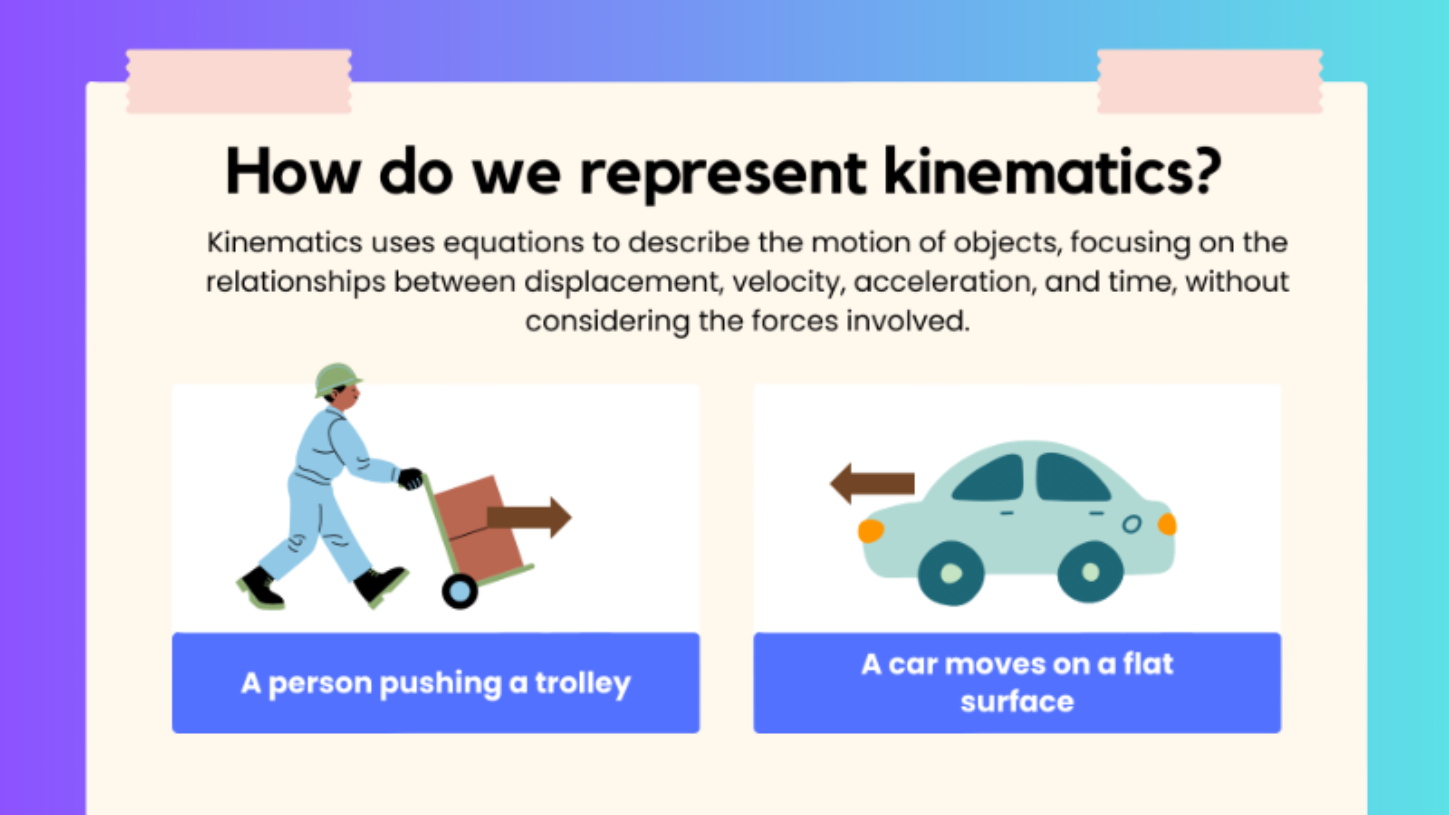Pengenalan
What is Linear Kinematic Motion?
Linear kinematic motion refers to the study of the movement of objects along a straight line, describing how their position, velocity, and acceleration change over time. This concept is fundamental in understanding motion in physics and is widely applied in various real-world situations, such as driving a car, objects falling freely under gravity, or the motion of projectiles. Kinematics focuses on describing the motion of an object without considering the forces that cause it. In linear motion, we are particularly interested in how the following quantities interact:
- Displacement (s): The distance and direction of an object's movement from its initial position.
- Velocity (v): The speed of the object in a specific direction. It can be initial velocity (u) or final velocity (v).
- Acceleration (a): The rate at which the velocity changes over time.
- Time (t): The duration of the motion.
- Sesaran (s): Jarak dan arah pergerakan objek dari kedudukan asalnya.
- Halahu (v): Kelajuan objek dalam arah tertentu. Ia boleh menjadi halaju awal (u) atau halaju akhir (v).
- Pecutan (a): Kadar di mana halaju berubah mengikut masa.
- Masa (t): Tempoh pergerakan.

